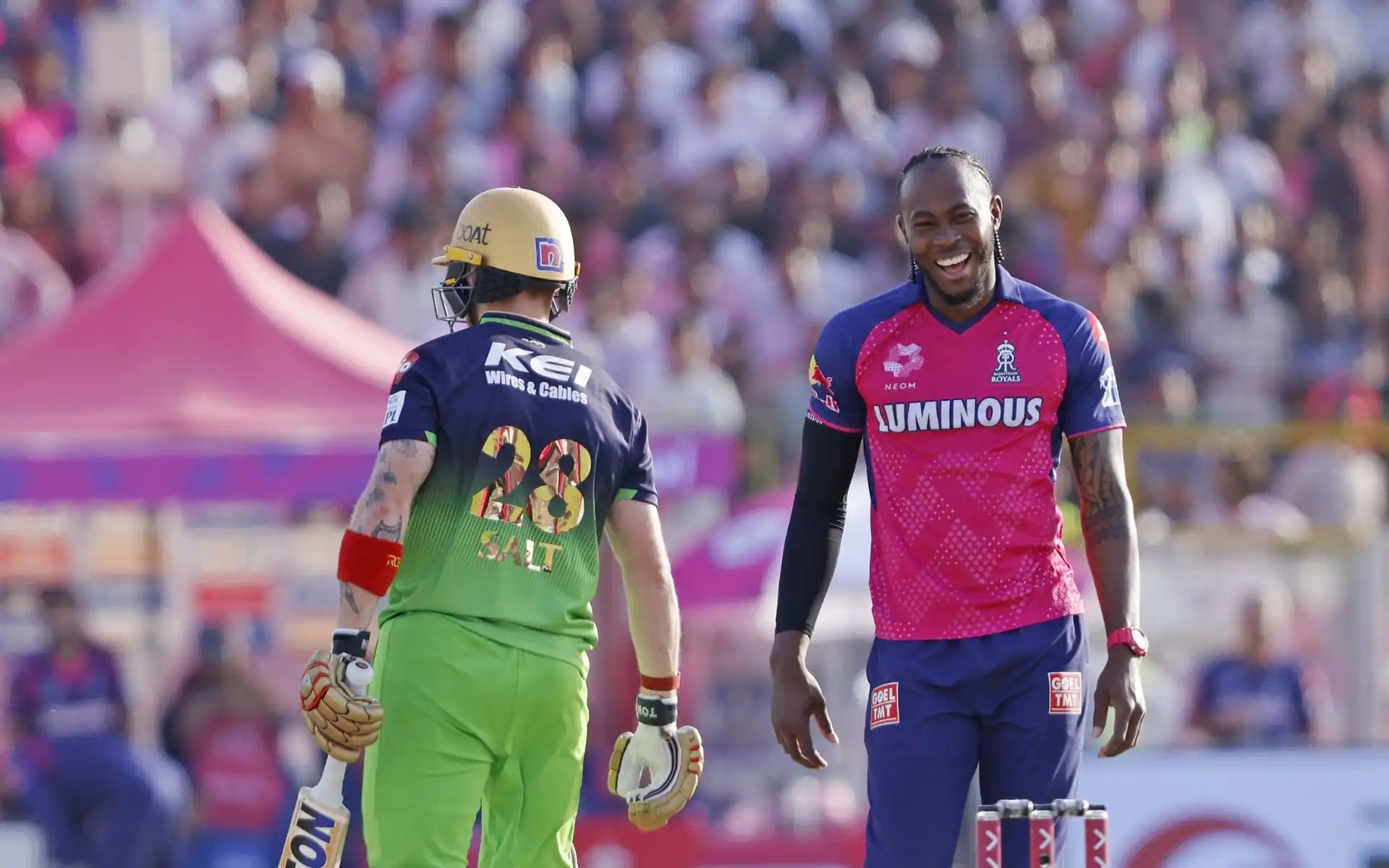![Sachin Tendulkar during the desert storm innings [Source: @SunilKu94764515/x.com]](https://onecricketnews.akamaized.net/parth-editor/oc-dashboard/news-images-prod/1745446090320_tendulkar(3).jpg?type=hq) Sachin Tendulkar during the desert storm innings [Source: @SunilKu94764515/x.com]
Sachin Tendulkar during the desert storm innings [Source: @SunilKu94764515/x.com]
Twenty-seven years ago, cricket witnessed one of its most transcendent performances as Sachin Tendulkar battled not just the mighty Australians, but also the elements themselves. On the scorching sands of Sharjah, a young master crafted two innings of such brilliance that they would forever be etched in cricketing lore as the "Desert Storm." As cricket celebrates Tendulkar's 52nd birthday today, these performances—delivered on April 22nd and 24th, 1998—stand as perfect examples of his genius and offer timeless lessons for the modern cricketer.
What made these consecutive knocks of 143 and 134 special wasn't merely the runs scored or boundaries hit, but how they were constructed—with technical precision, mental resilience, and strategic brilliance against the world's premier bowling attack. In an era where cricket's formats continue to evolve and batting approaches grow increasingly explosive, Tendulkar's Desert Storm masterclasses offer a blueprint for excellence that transcends eras.
Key Statistics from the Desert Storm Innings:
- April 22, 1998: 143 runs off 131 balls (9 fours, 5 sixes), SR: 109.16
- April 24, 1998: 134 runs off 131 balls (12 fours, 3 sixes), SR: 102.29
The Desert Storm: A Brief Recap
Before delving into the lessons, let's revisit those magical nights in Sharjah:
April 22, 1998: In a crucial match that India needed to either win or reach a certain score to qualify for the final, Tendulkar scored a magnificent 143 off 131 balls against an Australian attack featuring Shane Warne, Michael Kasprowicz, and Damien Fleming. The match was interrupted by an actual sandstorm, but when play resumed, Tendulkar unleashed a metaphorical storm of his own. Though India lost the match, his innings ensured qualification for the final.
April 24, 1998: Just two days later in the final, Tendulkar produced another masterpiece, scoring 134 off 131 balls, leading India to victory against the same Australian side and securing the Coca-Cola Cup. The consecutive performances against the world's best team cemented his status as cricket's premier batsman.
![Sachin Tendulkar and his scores agains all bowlers [Source: OneCricket]](https://onecricketnews.akamaized.net/parth-editor/oc-dashboard/news-images-prod/1745442862936_tendulkar(1).jpg?type=mq) Sachin Tendulkar and his scores agains all bowlers [Source: OneCricket]
Sachin Tendulkar and his scores agains all bowlers [Source: OneCricket]
April 22, 1998 (143 runs):
- vs. Shane Warne: 59 runs off 39 balls (3 sixes, 4 fours)
- vs. Michael Kasprowicz: 37 runs off 32 balls (1 six, 2 fours)
- vs. Damien Fleming: 24 runs off 28 balls (1 six, 1 four)
- vs. Tom Moody: 17 runs off 22 balls (2 fours)
- vs. Steve Waugh: 6 runs off 10 balls
April 24, 1998 (134 runs):
- vs. Shane Warne: 51 runs off 38 balls (2 sixes, 4 fours)
- vs. Michael Kasprowicz: 35 runs off 34 balls (1 six, 3 fours)
- vs. Damien Fleming: 30 runs off 33 balls (3 fours)
- vs. Tom Moody: 12 runs off 18 balls (1 four)
- vs. Mark Waugh: 6 runs off 8 balls (1 four)
Technical Mastery: The Foundation of Greatness
Footwork Precision
One of the most striking aspects of Tendulkar's Desert Storm innings was his immaculate footwork. Against the spinners, particularly Shane Warne, Tendulkar's footwork was decisive and purposeful. He would either fully commit to the front foot when driving or rock back completely when cutting or pulling.
Modern Application: In today's era where batsmen often rely on power and range hitting, Tendulkar's footwork serves as a reminder that technical precision remains fundamental. T20 specialists like Virat Kohli and Kane Williamson who maintain classical footwork principles tend to have more consistent success across conditions compared to those with static feet.
Shot Selection Discipline
Despite the aggression displayed during those innings, Tendulkar's shot selection was impeccable. He rarely played across the line in the early stages and expanded his range of shots as the innings progressed. Each boundary was calculated, not reckless.
Modern Application: For contemporary players frequently exposed to T20 cricket, the discipline to play within one's strengths initially before expanding the shot range is crucial. Jos Buttler's transformation from a solid player to a devastating opener illustrates how controlled aggression, rather than unbridled hitting, leads to sustainable success.
April 22, 1998 (India scored 250/5):
- With Sourav Ganguly: 38 runs (Tendulkar contributed 22)
- With Nayan Mongia: 57 runs (Tendulkar contributed 41)
- With Mohammad Azharuddin: 83 runs (Tendulkar contributed 51)
- With Ajay Jadeja: 45 runs (Tendulkar contributed 29)
Percentage of team's runs: 57.2% (143 out of 250)
- April 24, 1998 (India scored 275/4):
- With Sourav Ganguly: 39 runs (Tendulkar contributed 24)
- With Nayan Mongia: 95 runs (Tendulkar contributed 57)
- With Mohammad Azharuddin: 120 runs (Tendulkar contributed 53)
- Percentage of team's runs: 48.7% (134 out of 275)
![Sachin Tendulkar Partnerships in the two matches [Source: OneCricket]](https://onecricketnews.akamaized.net/parth-editor/oc-dashboard/news-images-prod/1745445247403_tendulkar(2).jpg?type=mq) Sachin Tendulkar Partnerships in the two matches [Source: OneCricket]
Sachin Tendulkar Partnerships in the two matches [Source: OneCricket]
Strategic Brilliance: The Chess Match
Calculated Acceleration
Both Desert Storm innings followed a similar pattern: measured accumulation followed by calculated acceleration. In the first innings, Tendulkar scored his first 50 runs off 61 balls, then exploded with his next 93 runs coming off just 70 deliveries. This wasn't by accident but by design.
Modern Application: Even in the age of T20 cricket, the concept of innings building remains relevant. Players like Virat Kohli and KL Rahul who can modulate their scoring rate based on match situations demonstrate how Tendulkar's strategic approach can be applied to modern contexts.
Target Identification
Tendulkar famously targeted specific bowlers during his Desert Storm innings. His assault on Shane Warne, then considered the world's best spinner, was tactically astute as it forced Steve Waugh to alter his bowling plans and field placements.
Modern Application: Smart batsmen still identify match-up advantages. Joe Root's targeting of specific bowlers in Test matches and Suryakumar Yadav's calculated risks against particular deliveries in T20s reflect how Tendulkar's strategic targeting remains a valuable approach.
Adaptation and Evolution: Cricket's Chameleon
Reading Conditions
What made the Desert Storm innings even more remarkable was Tendulkar's adaptation to the conditions. The Sharjah pitch was getting slower as the matches progressed, and after the sandstorm in the first match, the surface changed character. Tendulkar adjusted his game accordingly, using the pace of the ball more when the pitch slowed down.
Modern Application: Adaptability remains cricket's most valuable skill. Players like Kane Williamson and Rishabh Pant who can adjust their approach based on pitch conditions, rather than playing a one-dimensional game, demonstrate how Tendulkar's chameleonic abilities remain relevant.
Technical Adjustments
Keen observers noted how Tendulkar made subtle technical adjustments during both innings. Against the spinners, he initially played with soft hands before using his feet more progressively as he grew comfortable. Against the pacers, his backfoot trigger movement became more pronounced as the innings developed.
Modern Application: The best modern players continue to make real-time adjustments. Marnus Labuschagne's constant refinements to his technique and Rohit Sharma's adjustments against specific bowlers show the ongoing importance of technical adaptation.
Beyond Statistics: The Intangible Legacy
Elevating the Team
While the Desert Storm innings are remembered for individual brilliance, they profoundly impacted the entire Indian team. The psychological boost of watching their teammate dominate the world's best team elevated everyone's game. India's approach to chasing totals and handling pressure in subsequent years can be traced back to the confidence these innings instilled.
Modern Application: Individual performances that elevate an entire team remain cricket's most powerful currency. Ben Stokes' Headingley heroics and Virat Kohli's fighting knocks have similar team-lifting effects, reminding us that cricket's greatest performances transcend personal milestones.
Psychological Edge
After the Desert Storm innings, Australia knew they could never count India out as long as Tendulkar was at the crease. This psychological edge lasted for years, influencing strategy and sometimes causing Australia to overcompensate in their planning.
Modern Application: Creating psychological advantages through performance remains crucial. Jasprit Bumrah's impact on opposition batting plans and Pat Cummins' ability to unsettle even the most composed batsmen show how individual excellence creates tactical ripples that extend beyond statistics.
Conclusion: Timeless Excellence in an Evolving Game
The Desert Storm innings, now twenty-seven years in cricket's rearview mirror, offer more than nostalgic reminiscence. They provide a technical, mental, and strategic blueprint that remains relevant across cricket's evolving formats. While bats have become heavier, boundaries shorter, and scoring rates higher, the fundamental principles that made Sachin Tendulkar's performances special—technical precision, mental fortitude, strategic acumen, and adaptability—remain the cornerstones of batting excellence.
Modern cricketers facing the unique challenges of multi-format proficiency would be well-served to study these legendary performances. In Tendulkar's desert masterpieces, they'll find not just a history lesson but a masterclass in batting that transcends eras and formats.
As T20 franchises and data analysts search for the next competitive edge, perhaps the answer lies partly in looking back to those two nights in Sharjah, where a young master showed that brilliance in cricket is both timeless and universal.


![[Watch] Sachin Tendulkar Brings Back 2003 WC Memories With A Trademark Uppercut](https://onecricketnews.akamaized.net/parth-editor/oc-dashboard/news-images-prod/1742143795075_sachin_tendulkar (1).jpg)



.jpg?type=mq)
